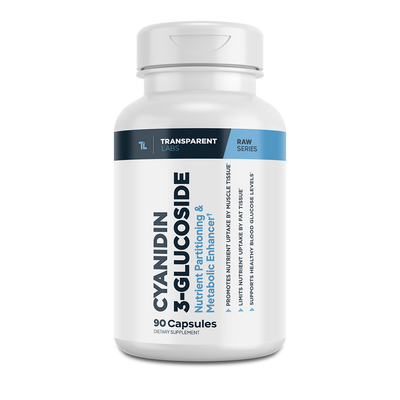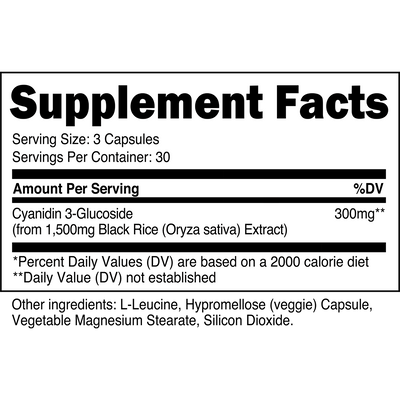How to Increase Testosterone Naturally with 5 Simple Lifestyle Hacks

How to Boost Testosterone Naturally (and What to Avoid!)
Nutrition is just one piece of the testosterone-boosting puzzle. No matter how perfect your diet is, if you’re not living an all-around healthy lifestyle, your testosterone levels will suffer. Multiple factors contribute to endocrine function, and certain “bad” habits can suppress your body’s natural testosterone production.
Here are commonly overlooked lifestyle choices that are killing your testosterone production slowly, and how to fix them!
Sedentary Work/Lifestyle
In this age of digital everything, many people are in the unfortunate predicament of sitting behind a computer monitor for 8+ hours per day. Recent research contends that this is a crucial factor in the obesity epidemic we’re witnessing [1]. Recall from earlier that overweight and obese men tend to have higher estrogen levels and lower testosterone levels.
Sitting for long periods of time has been found to inactivate a specific fat-burning enzyme called lipoprotein lipase (LPL). In turn, the body’s intrinsic capacity to burn fat for energy is effectively limited when we work a sedentary job. This deficit makes you more prone to gaining excess body fat when your calorie intake exceeds your calorie expenditure.
So, how can you avoid the endocrine disruption effects of working a desk job?
Quite simply: Get on your feet and move more! Every 30 to 45 minutes, take a quick 5-minute walk around the office or go refill your water bottle. This will not only rejuvenate your mind and give your eyes some relief, but it will keep your body from entering full-on “sedentary mode.”
You can also look into a standing desk for your workspace as this will keep you on your feet without hindering your ability to be productive.
Intensity Is Everything (vis-à-vis Exercise)
Exercise plays a pivotal role in boosting testosterone and sculpting a chiseled physique, but not just any type of exercise. If all you do right now is go for long walks on the treadmill, it’s not going to do much to increase your testosterone levels. While it’s certainly better than sitting around all day, your exercise routine should be somewhat challenging.
The magic starts to happen when you take the intensity up a notch.
High-intensity exercise pushes you to your anaerobic threshold, and this has a distinct positive effect on natural testosterone production [2]. Though strenuous, the “burning” sensation you feel in your muscles after sprinting as fast as possible for 100 meters or lifting relatively heavy weight repeatedly is a positive sign. It tells you you’re pushing yourself hard enough to elicit the many metabolic and hormonal benefits of vigorous exercise.

And don’t worry, this is not saying you have to train like a pro bodybuilder or until you’re puking your guts out, but high-intensity workouts should leave your muscles burning a bit (and that’s a good thing!).
Arguably the best part of high-intensity workouts is that they are effective and time-efficient. Forget spending hours on the elliptical or Stairmaster. You can complete a high-intensity workout in 20-30 minutes, and you don’t need a bunch of fancy equipment either. Heck, there are many ways to approach high-intensity exercise without any gym equipment.
Here’s an example of a circuit-style workout you can do in the comfort of your living room:
Complete 3-5 circuits with about 60 seconds rest between each. Your heart will be pumping and muscles will be burning. Remember, it’s not about the time you put in; it’s what you put into the time that matters.
Even 30 minutes of high-intensity exercise, 3-4 times per week, can have profound effects on testosterone levels.
Alcohol and Testosterone: Do’s and Don’ts
Let’s be real, pretty much everybody knows that drinking excessive amounts of alcohol carries a ton of health risks. I could sit here and tell you the obvious, like alcohol damages the liver and suppresses your immune system, but that isn’t particularly enlightening to most people.
Instead, let’s focus on what will grab your attention: muscles and testosterone.
Surprisingly, several studies have found that even acute alcohol intoxication (i.e. getting drunk one time) has been shown to reduce muscle protein synthesis by nearly 30%, and these effects appear to be specific to fast-twitch muscle fibers and muscle tissue surrounding the heart [3, 4]. One study also showed that acute alcohol intoxication decreased blood testosterone levels by upwards of 200 ng/100 mL in men [5].
In short: those occasional Friday nights indulging in copious libations are doing more damage than you think for your body composition and longevity.
Chronic alcohol consumption is well-known to disrupt metabolic processes, adversely affecting skeletal muscle’s ability to produce energy [6].
Interestingly, acute consumption of small amounts of alcohol may actually increase testosterone according to one study [7]. The catch is that the subjects were given a very low dose of alcohol (roughly half the amount of ethanol found in a 12 oz can of beer).
And let’s be honest, no man goes out for a night on the town just to drink half a beer.
Bottom line: avoid alcohol as much as possible. It’s okay to drink an occasional glass of wine or beer from time to time, but regularly pounding an entire bottle of chardonnay or a 12-pack of Bud Light is not going to help you get your manhood back.
Snooze Your Way to High Testosterone Levels
Sleep is a foundation of health and longevity, and nothing is more important than those two things. Yet, many adults barely get more than five hours of sleep per night due to their lifestyles.
Not sleeping enough is a major no-no if you’re trying to boost testosterone levels naturally. In fact, a recent study in healthy young men found that as little as one week of sleep deprivation (<5 hours per night) reduced their testosterone levels by an average of 15% (not to mention, their reported “vigor” plummeted) [8].
Other research has found that even one night of sleep loss can impair insulin sensitivity, spike cortisol levels, and increase food intake [9]. (Remember what cortisol does to testosterone!)
Sleep deprivation is also strongly correlated with obesity and type-II diabetes [10].
Okay, so the solution is to sleep as much as possible, right? Well, not quite...
Oversleeping can have similar health ramifications as sleep deprivation [11]. Ideally, you should aim for seven to nine hours of sleep per night for optimal health and to boost testosterone [12].
As we age, the need for long nights of sleep wanes ever-so-slightly. Older men (e.g. 55+ ) might be able to “get away” with six hours of sleep per night. Young and middle-aged men, however, typically require at least seven hours per night, but no more than nine.
Regardless of how busy you are, or all the responsibilities you have to worry about, you can set aside adequate time for sleep. If not, you should seriously reevaluate where your priorities lie.
Get Outside More To Increase Testosterone Naturally
It comes with the territory of most jobs to be stuck inside all day. But most men are overlooking how dramatically sunshine can affect testosterone levels and mood. The ultraviolet rays of the sun are Mother Nature’s way of activating vitamin D found in the skin.
Familiar with the phenomenon of the “winter blues”? Well, it’s more or less a direct result of less sun exposure during the colder months, and vitamin D deficiency is associated with mood disorders like depression [13]. On the flip side, men with higher vitamin D levels typically have higher testosterone levels [14].
Never take a breath of fresh air for granted. Get outside and sit in the sun for at least 20-30 minutes per day.
You can also take it a step further by supplementing with Transparent Labs vitamin D3 + K2. One study found that healthy adult men who supplemented with vitamin D3 for one year increased total and free testosterone by an average of 33% and 21%, respectively [15].
Should You Use a Testosterone Booster?
There is no “magic pill” that will make up for things like lack of sleep, not exercising, and going on weekend benders every month. After all, doing the right things consistently is the name of the game, especially to boost testosterone levels naturally.
That said, specific natural extracts can offer significant benefits. One such ingredient is LJ100 — a patented extract of Tongkat Ali known for its ability to support testosterone production and male health. Incorporating supplements that contain LJ100 can be a beneficial addition to your testosterone-boosting regimen.
However, an evidence-based natural testosterone booster, like Transparent Labs Vitality, which may also consider integrating ingredients like LJ100, can certainly help when you've established a healthy lifestyle. Click below to learn more about how the ingredients in Vitality work and the science behind them:









